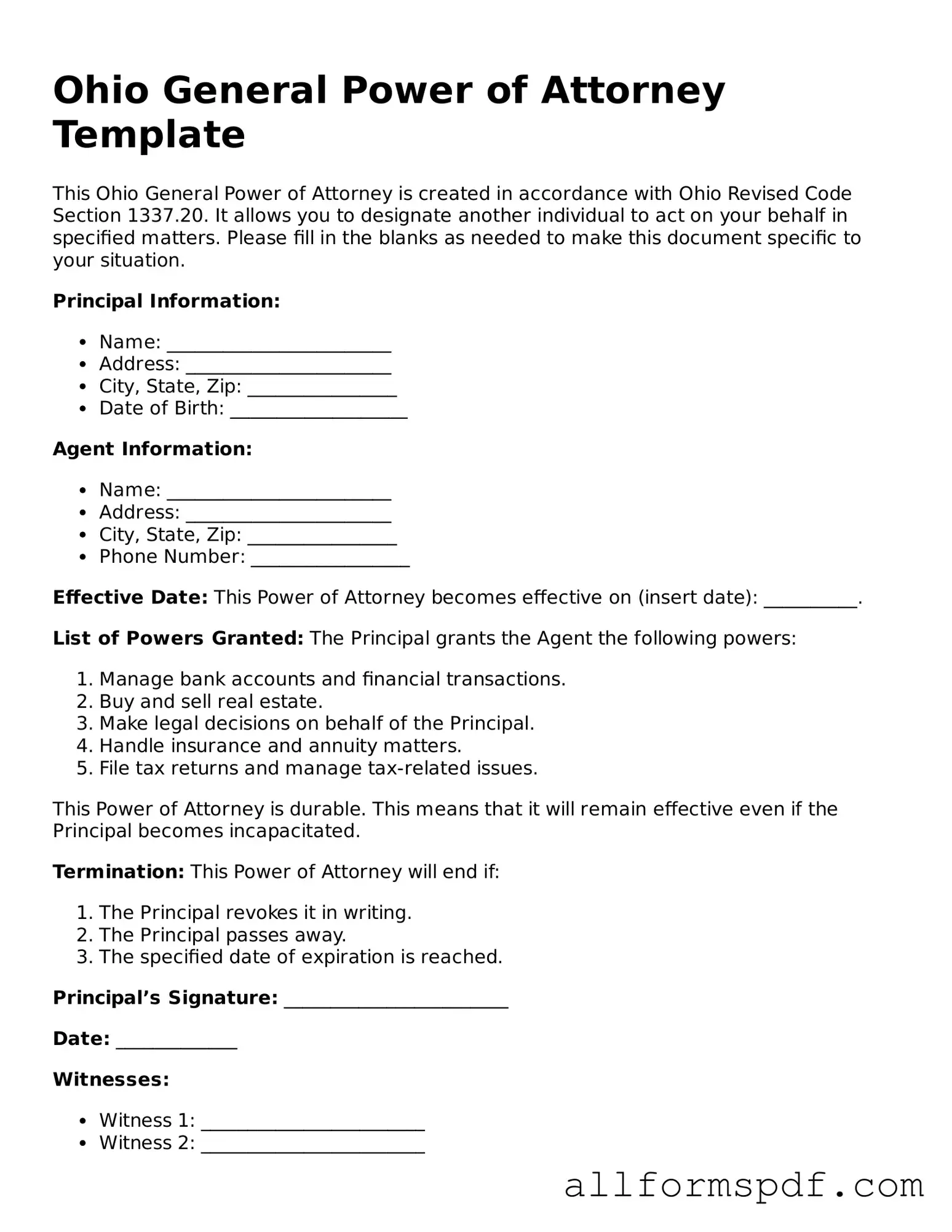Filling out a Power of Attorney (POA) form in Ohio is a significant step in ensuring that your financial and medical decisions are handled according to your wishes. However, many individuals make common mistakes that can lead to complications down the line. Understanding these pitfalls can help you navigate the process more smoothly.
One frequent error is not specifying the powers granted to the agent clearly. A POA should outline exactly what authority the agent has. If the document is vague, it can lead to confusion or disputes among family members. It is essential to explicitly state whether the agent can handle financial matters, make healthcare decisions, or both.
Another mistake people often make is failing to date the document properly. A Power of Attorney should include the date it was signed to establish its validity. Without a date, there may be questions about when the authority was granted, which can complicate matters if the document is ever contested.
Moreover, individuals sometimes forget to have the document notarized. In Ohio, a Power of Attorney must be signed in the presence of a notary public to be legally binding. Skipping this step can render the document invalid, leaving your agent without the authority to act on your behalf.
Additionally, many people overlook the importance of discussing their wishes with the chosen agent. It is crucial to have a conversation about the responsibilities involved and ensure that the agent is willing and able to take on this role. Without this dialogue, your agent may not fully understand your preferences, which can lead to decisions that do not align with your wishes.
Lastly, individuals often forget to review and update their Power of Attorney regularly. Life circumstances change, and so do relationships. It is wise to revisit this document periodically to ensure that it reflects your current wishes and that the appointed agent is still the right choice for the role.
